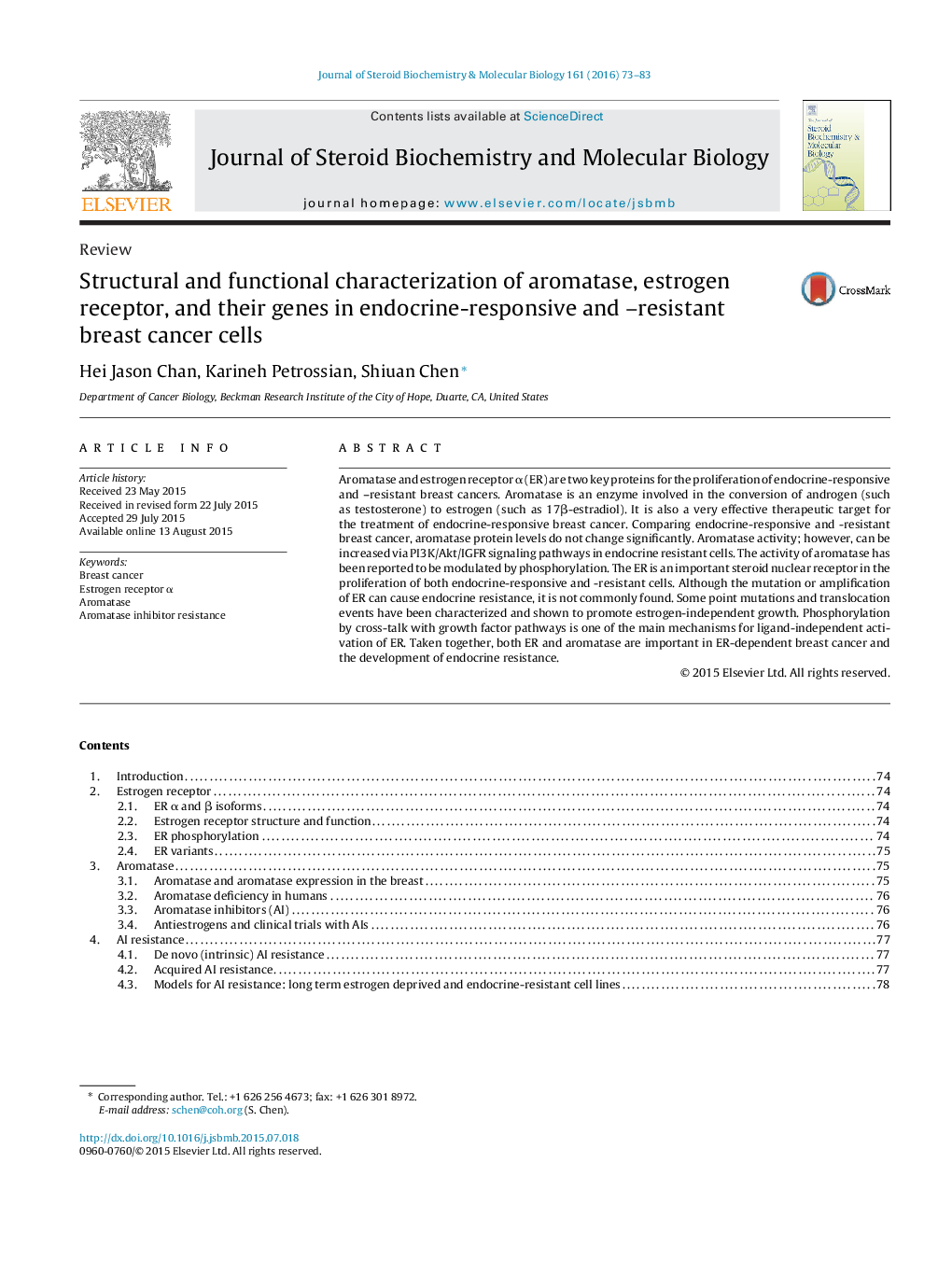| کد مقاله | کد نشریه | سال انتشار | مقاله انگلیسی | نسخه تمام متن |
|---|---|---|---|---|
| 1991244 | 1540987 | 2016 | 11 صفحه PDF | دانلود رایگان |
• Aromatrase and estrogen receptor (ER) play important roles in endocrine-responsive and –resistant breast cancers.
• Steroidal and non-steroidal aromatase inhibitors (AIs) bind to aromatase differently.
• ER mutations have been identified and suggested to have roles in endocrine resistance.
• Phosphorylation of ER can result in ligand-independent activation of the receptor.
• The ligand-independent activation of ER is critical for the development of endocrine resistance.
Aromatase and estrogen receptor α (ER) are two key proteins for the proliferation of endocrine-responsive and –resistant breast cancers. Aromatase is an enzyme involved in the conversion of androgen (such as testosterone) to estrogen (such as 17β-estradiol). It is also a very effective therapeutic target for the treatment of endocrine-responsive breast cancer. Comparing endocrine-responsive and -resistant breast cancer, aromatase protein levels do not change significantly. Aromatase activity; however, can be increased via PI3K/Akt/IGFR signaling pathways in endocrine resistant cells. The activity of aromatase has been reported to be modulated by phosphorylation. The ER is an important steroid nuclear receptor in the proliferation of both endocrine-responsive and -resistant cells. Although the mutation or amplification of ER can cause endocrine resistance, it is not commonly found. Some point mutations and translocation events have been characterized and shown to promote estrogen-independent growth. Phosphorylation by cross-talk with growth factor pathways is one of the main mechanisms for ligand-independent activation of ER. Taken together, both ER and aromatase are important in ER-dependent breast cancer and the development of endocrine resistance.
Journal: The Journal of Steroid Biochemistry and Molecular Biology - Volume 161, July 2016, Pages 73–83
